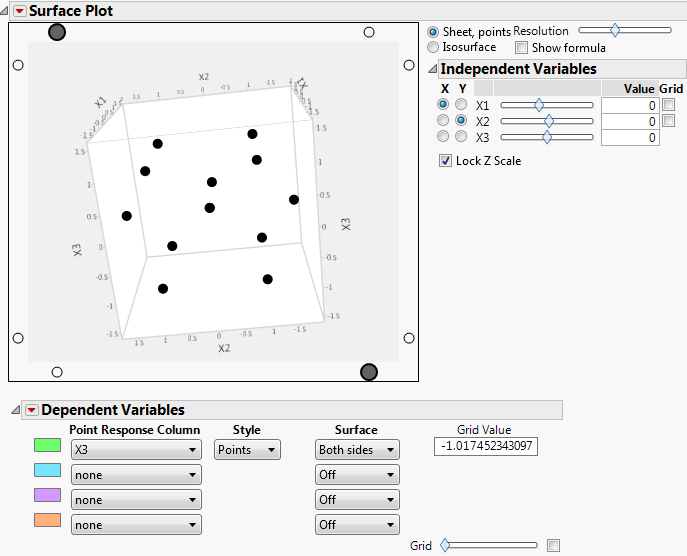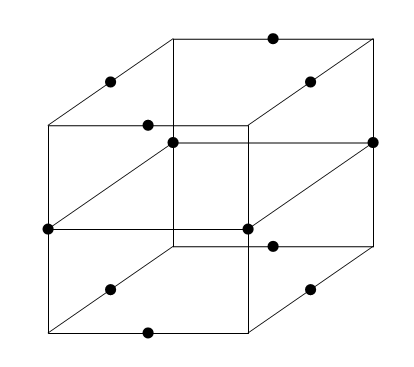Overview of Response Surface Designs
The Response Surface Design platform provides the classical central composite and Box-Behnken designs, including blocked versions of these designs. For central composite designs, you can control the placement of axial points and other aspects of the design. Response surface designs are available for continuous factors only and are provided for up to eight factors.
Tip: You can use DOE > Custom Design to construct optimal response surface designs that accommodate your specific experimental situation. Custom Design constructs response surface designs that are much more flexible than classical response surface designs. In particular, you can use the Custom Design platform to create response surface designs that involve categorical factors or more than eight continuous factors. You can also specify the number of runs and restrictions on the design space. For examples, see Response Surface Experiments.
A central composite design (Figure 11.2) combines a two-level fractional factorial design and two other types of points:
• Center points, where all the factor values are set to the midrange value.
• Axial points, where one factor is set to a high or low value (an axial value) and all other factors are set to the midrange value.
Depending on your selections relative to axial points, a central composite design can have as many as five distinct settings for each factor and the axial points can extend beyond the specified range of the factors.
Figure 11.2 Central Composite Design for Three Factors
A Box-Behnken design (Figure 11.3) has only three levels per factor and has no design points at the vertices of the cube defined by the ranges of the factors. This type of design can be useful when you must avoid these points due to engineering considerations. But, the lack of design points at the vertices of the cube means that a Box-Behnken design has higher prediction variance, and so less precision, near the vertices compared to a central composite design.
Figure 11.3 Box-Behnken Design for Three Factors
In JMP, you can construct a response surface design in two ways:
• Using the Response Surface Design platform (for up to eight continuous factors)
• Using the Custom Design platform (and clicking the RSM button in the Model outline)
In both cases, the design table contains a Model script that you can run to fit a model. The Model script applies the Response Surface Effect attribute to each main effect, so that the main effects appear with a &RS suffix in the Fit Model window. This attribute ensures that the Fit Least Squares report contains a Response Surface report. For more information about this report, see Fit Least Squares Report in Fitting Linear Models.
Note: The Response Surface outline in the Standard Least Squares report is not shown for response surface designs that contain more than 20 continuous factors.

